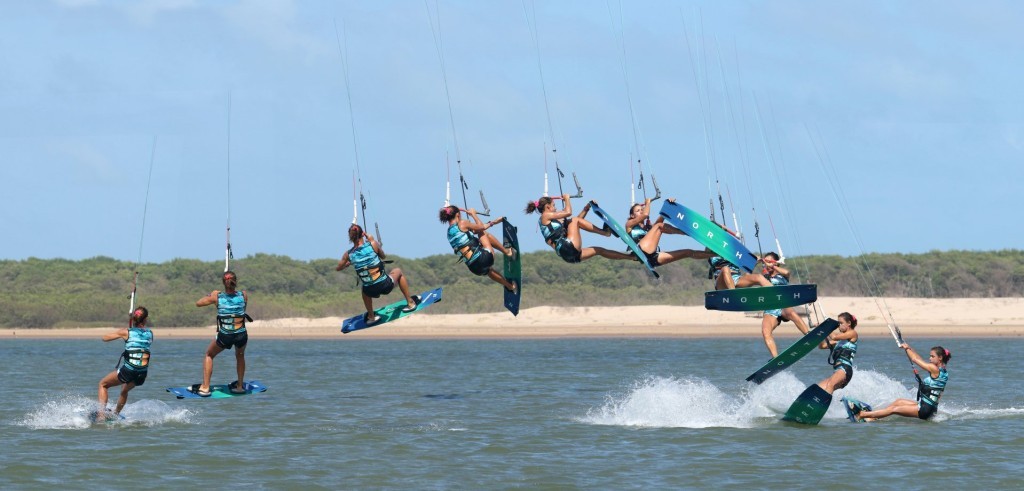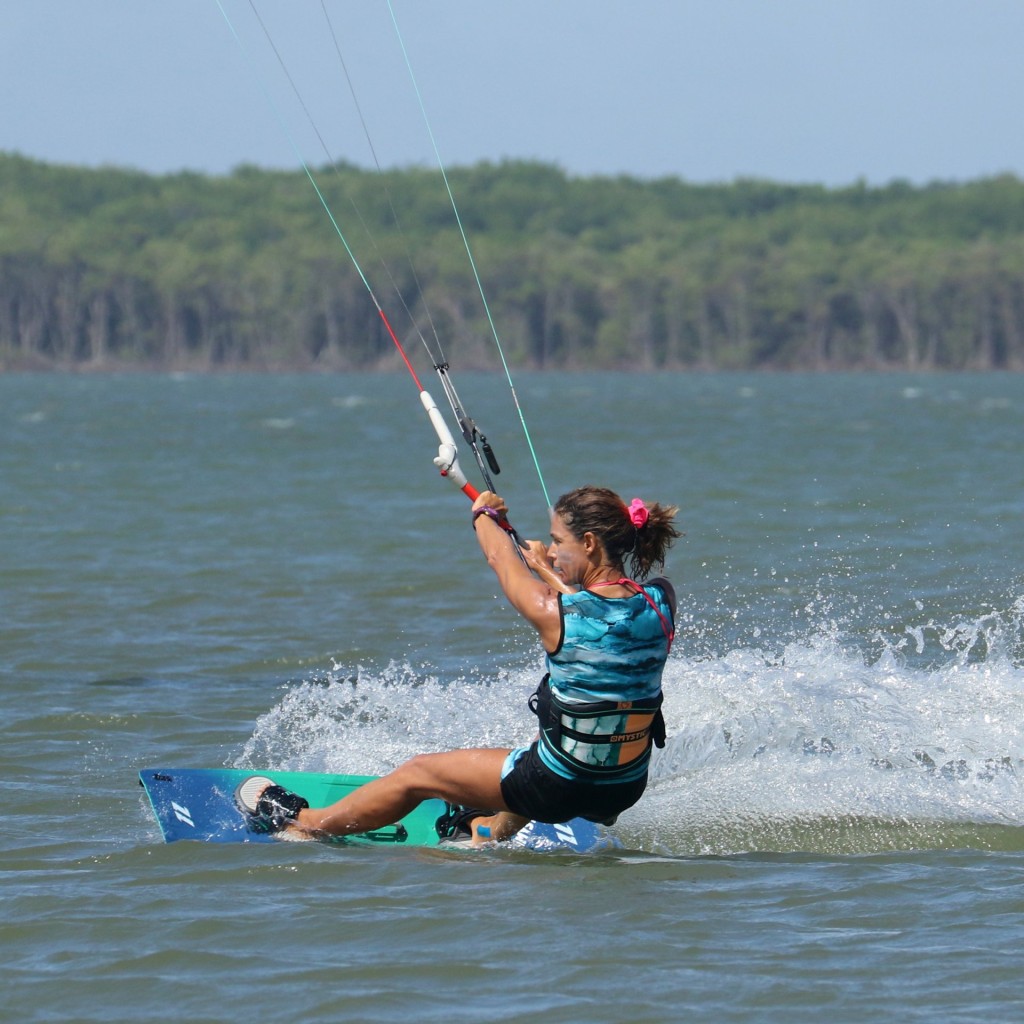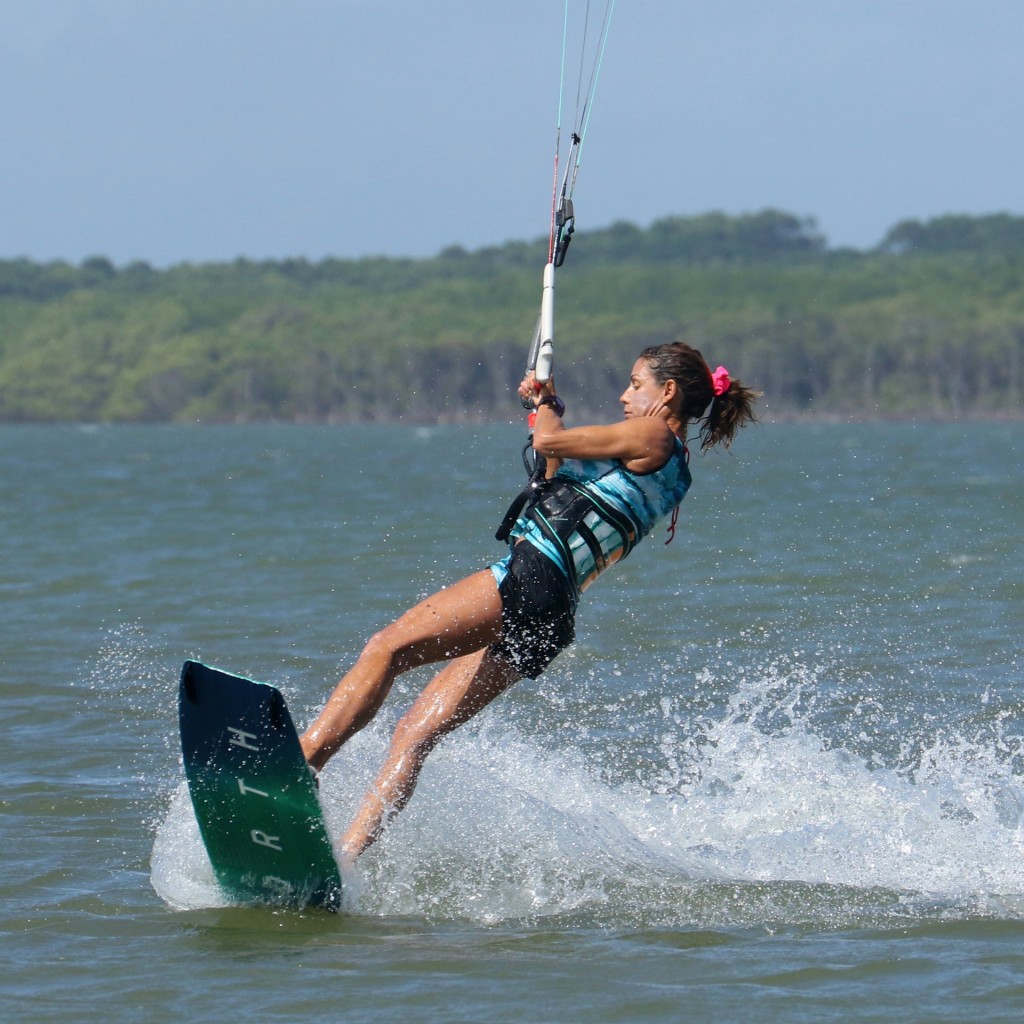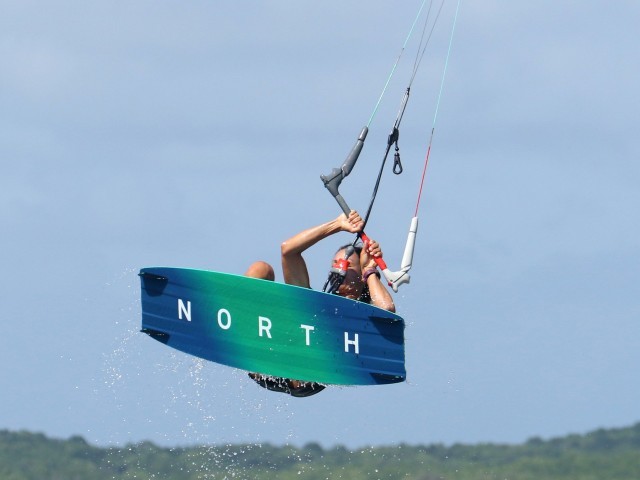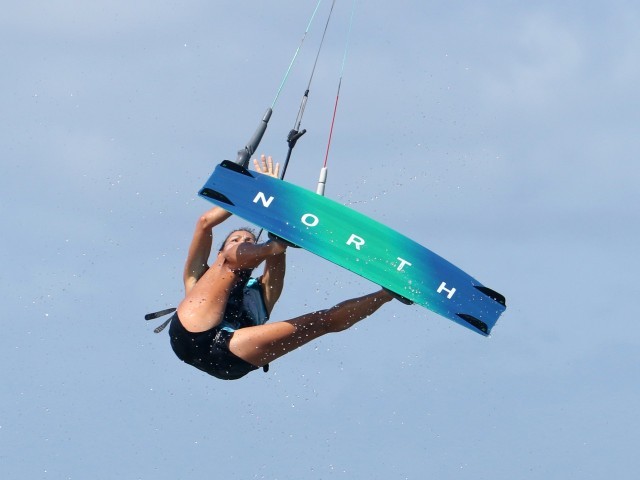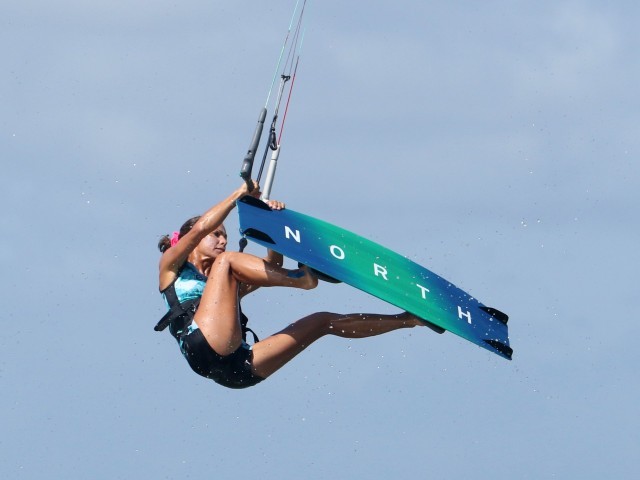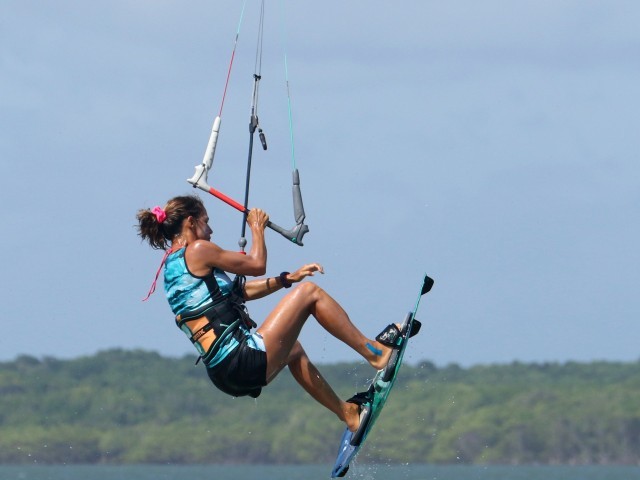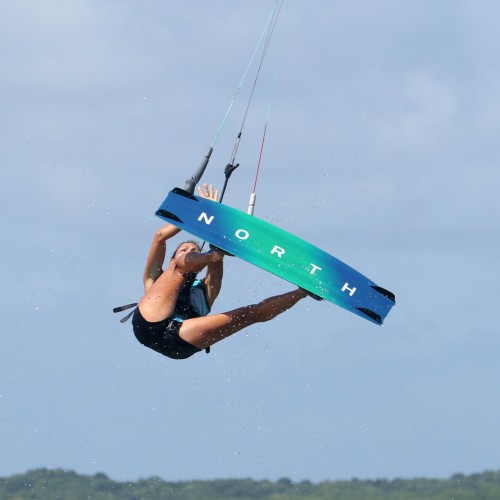
New Nose Grab BLT
Technique / Intermediate
Introduction
It would appear that there must be more possible variations of your typical Back Loop (or roll) Transition than the average combination lock. This one is a little bit like playing twister after a week on a boat. It’s not the simplest grab combination, but well worth the effort, especially if you enjoy a challenge.
So what exactly is a new nose grab when muddled into a BLT. Well by new nose grab we mean that you’ll be coming out of the move doing a nose grab in that direction. If you have a quick cheeky peak at the video, Karine is going into her transition from right to left, and will therefore land coming back to the right. This means that her nose grab will be the same as if she were jumping to the right. Right knee up, back leg (left) extended, her back hand, left, reaching across for the grab, so that she can dive her kite for landing with her right front hand. How hard can it be to casually add one of these into your back rotation in a transition? Let’s have a look.
Approach Pic A.
This doesn’t need to be a high move, but you do need time to both rotate and sneak in a new nose grab, so a few extra nano seconds and a slower rotation won’t go amiss. To give yourself time and balance in the air it helps to be moving, so come in on an edge with comfy speed. If you’re feeling sluggish you can even relax your edge to accelerate coming into the move. With the coast clear it’s a hefty short sharp send to move the kite quickly from either 1 o’clock or 11 o’clock. As the kite starts to move you’ll need to check your speed by carving up slightly, which will also put pressure onto your edge and give you something to kick against when you take off. You can see that Karine has some speed, she’s given the bar a positive push/pull on the sweet spot and she’s carving the board up slightly to increase both tension in the lines and pressure on the edge.
Take Off Pic B.
This bit is pretty crucial, as your control and balance is either claimed or lost at this moment. You want to convert your speed into lift, whilst stopping the kite and initiating your back roll. Stopping the kite moving further is just a matter of levelling the bar, so as long as you keep your shoulders up and don’t roll back, pulling in on the bar will do the job. To convert your speed into lift you need to stamp hard against your back heel, extending your leg and whole self against the edge. The rotation comes from the carve, but as you want it nice and slow you mustn’t throw your head. Looking at Karine you can see that her bar is in and level, so the kite has stopped. She’s carved up without looking over her shoulder so she’ll rotate slowly. And she has really extended up into the air, stamping hard against her edge, slowing herself down and exploding herself up.
Kite & Board Prep Pic C.
Once you’re in the air you have two jobs. Get the kite under control so that it’s where you want it and get the board up and close so that the grab is possible. If you have a look at the pic, the first glaring fact is that Karine’s bar is not level. She’s actually steering the kite forwards to make sure it doesn’t go back. This may seem counter intuitive in a transition, but with the kite redirecting forwards she’ll also get some drift in that direction, which will give her both more balance and more time and stop the kite drifting back as it normaly would. You need to get this done whilst you’ve still got two hands on the bar. Next off is getting the board into a grabable place. So bring your knees up just like Karine. Last take away from this image is that Karine is looking at where she’ll grab, the present tail but the nose to be. This will not only make the grab simpler, but will also slow your rotation down as you’ll be looking the wrong way.
The Swap Pic D.
Once you’ve done your prep, you will have rotated sufficiently that you can now consider this a nose grab in the new direction. With the board already up you can manoeuvre it for the grab in a scissoring action. Bring what will now be your front knee up and across your body, whilst you extend your back leg away from you. The knee across brings the nose close, and the extended back leg tips it even closer to you. Karine has now released her new back hand, the one she doesn’t need to dive the kite and can reach for the grab.
The Moment Pic E.
With your legs sorted, the kite in place and the bar level you can now grab the nose and tweak it for all your worth. Make a concerted effort not to steer the kite as you keep the bar in on the sweet spot by keeping the bar level. Now Karine has the grab she can look where she hopes to land and hold her position until she comes around and starts to drop.
The Landing Pic F.
As soon as you start to drop you need to get yourself ready. Most importantly you need to get the kite diving, as unchecked it will happily and autonomously drift to the side of the window from where you’ll get no power. So keep the bar in on the sweet spot and steer it down hard using the outside of your hand to pull and your thumb to push. Look where you want to go so that you can aim downwind and try and control your feet as they drop, aiming for a tail first reception. Karine is diving hard, on the sweet spot, looking at the runway and lowering her board.
Top Tips
It goes without saying that you should be able to get your nose grab in a straight jump in the direction that you intend to land this transition. Giving yourself time to perform the same movement here is key, so the slower that you can rotate the better. It allows you to set everything in motion before getting the grab. Redirecting the kite forwards after take off will help no end as the kite will behave considerably better. Now have another look at the videos and the sequence for a full run through.
Common Problems
Missing the grab. The most likely issue. To guarantee a slow rotation don’t carve too far into wind. If you’re really whipping around, bear away and carve gently before take-off. Also if you don’t explode up and use only the kite to lift you, you’ll be playing catch up with your knees. By stamping hard you’ll be able to get the legs up quicker.
Landing hard and heavy on the front foot may be unpleasant or actually cause you to fall. This is because the kite is drifting whilst you’re concentrating on the rest. Make sure that you stop the kite and level the bar before you take off, and then make sure that you redirect the kite forwards before removing your grabbing hand. And finally make sure to dive hard for landing so that the kite comes down through the window and not along the edge.
Keystones
- Short sharp send
- Level and stamp
- Redirect kite whilst lifting knees
- Scissor legs and grab
- Dive hard
This technique article was in Issue 82 of IKSURFMAG.
Related
By Christian and Karine
Christian and Karine have been working together as a coaching team, running improver to advanced kitesurfing clinics since 2003.






